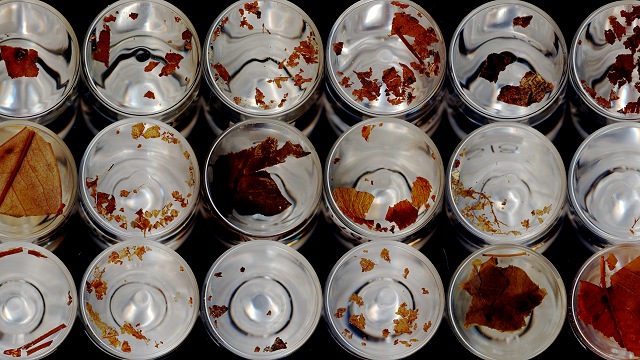
Every historian knows about the Rosetta Stone, which had an ancient Egyptian text carved on it in three different scripts, two of which had long resisted translation. The ability to cross-correlate the scripts—to calibrate their alphabets—opened up a huge body of knowledge to scholars. Climate researchers, as well as archaeologists and geologists, look for similar natural records that allow us to calibrate different yardsticks of time. A paper published today in the journal Science unveils a superb "document" of conditions during the last 53,000 years in a single place: Japan's remarkable Lake Suigetsu.
In 2006, researchers drilled into the mud at the center of Lake Suigetsu and carefully extracted four long cores of sediment. They found that the top part of this sedimentary record consisted of thin annual layers—varves—representing about 60,000 years of time. Varves are close to the ideal time record, but the conditions that favor them are rare. And this record also contained abundant plant remains, allowing three different timekeeping "scripts" to be calibrated against each other: varves, tree rings, and radiocarbon. The first two are considered the most nearly perfect measure of absolute time, but radiocarbon is a much more important yardstick, although the stick is not quite straight.
Radiocarbon, or carbon-14, is a wonderful tool for determining the age of recent organic remains—"recent" to a geologist, that is, meaning the last few tens of thousands of years. Radiocarbon is an unstable isotope of carbon that is formed by cosmic radiation at the edge of space and rains down upon us constantly, becoming incorporated in every living thing. The minute a living thing dies, it stops replenishing its radiocarbon and the radiocarbon slowly fades away with a half-life of 5730 years. Radiocarbon dating, then, is simple in principle: you sort out the carbon atoms and see how many carbon-14 atoms there are among the common carbon-12 atoms. The carbon in living matter contains about one part per trillion carbon-14, and after eight ten half-lives there would be 1/1024th of it left, or one part in a quadrillion. With the errors and uncertainties of measurements at this level, one or two more half-lives is as far as physics can take us.
Radiocarbon is complicated by factors on Earth and in heaven. Its formation in the upper atmosphere changes with the balance in cosmic radiation from the sun and from the galaxy at large. Also, global warming and cooling puts different amounts of air at the altitude where radiocarbon is made. So radiocarbon production is not constant. And on Earth, radiocarbon circulates differently in the air, on land and in the ocean.
The record in Lake Suigetsu is so promising because of the varves and the perfectly preserved fossil leaves. The varves march nicely right through the whole time span of radiocarbon, and the fossils can then give us a really accurate description of the bends and warps in the radiocarbon yardstick.